#celestial map
Explore tagged Tumblr posts
Text
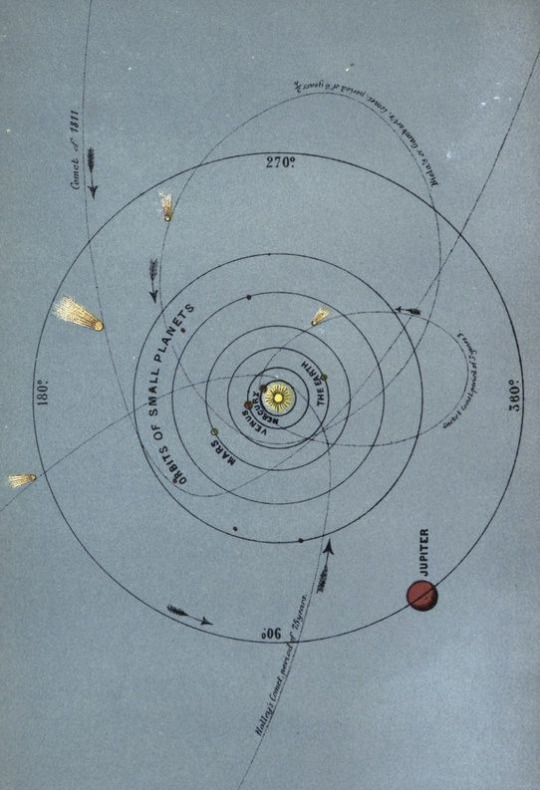
#celestial#celestial map#cosmos#planet orbits#scientific illustration#astronomy drawing#witchy aesthetic#cosmic witch
44 notes
·
View notes
Text

George Kearsley - Celestial Map For Southern Hemisphere, 1802
17 notes
·
View notes
Text

.348. Star map
#graphic design#art#illustration#linework#dark#geometry#digital art#graphic art#digital design#design#star#map#star map#celestial#celestial map#motion#location#gps#star location#sightseeing#nightseeing#skywatching#sky#nightsky#abstract#abstract art#contemporary art
6 notes
·
View notes
Text
Cardassian fashion headcanons
Visible closures (zippers, buttons, ties, etc) are considered unbelievably slutty, especially if there are a lot of then or they're large
Cleavage is not, it's just considered feminine. While Cardassians do not have "boobs" in a mammalian sense, Cardassian women still have bigger chests due to larger pectoral muscles and fat reserves. Cardassian women who look stronger are the beauty standard. So actually, even though Natima is considered too slender, she could probably throw Quark.
However, exposing your chula is a little slutty. Tastefully. More appropriate for evening wear. Wearing a boob window that hides the chula is more modest than having a low neckline that exposes it.
Exposing your neckridges does have some Implications, but not as much as you'd expect. Using makeup on more than a 2-4 scales on the other hand is akin to wearing red lipstick and red nail polish
Higher necklines and long sleeves are preferred for anyone working with "outsiders", which is usually something Cardassian men do. This is for temperature reasons and because letting an outsider see too much of even a living Cardassian body is frowned upon.
Jackets double as a way of covering a person's face after they have died suddenly and if no appropriate length of cloth was available. For a long time, Cardassians wore an outer robe that could fully be used as a shroud for this purpose, but long robes gradually fell out of fashion.
In the Cardassian Union, going shirtless with high-waisted pants, regardless of gender, is more acceptable than wearing low waisted bottoms with a shirt that can't meet them. This is because the stomach is close to the chuva, and some Cardassians essentially tattoo their stomachs* for private titillation. Low waisted clothes in general aren't held in high esteem.
These markings are also done partially for superstitious reasons, not that most Cardassians will admit it when someone who isn't Cardassian could hear it. Such marks are believed to help with fertility issues and "trap" your partners eye.
Most Cardassians wear undershirts, and. exposing these is also slutty. It ranges from "tasteful" (your jacket or tunic being cut so a little of the undershirt peeks out) to "you are getting fined for indecency" (most of the undershirt is visible, its sheer, its decorated so you'll stare, etc). Garak having his jacket open so you can see his shiny moire undershirt in Rocks and Shoals would be considered very inappropriate.
Wearing clothes that are very obviously made of pieced fabric (remnants seamed together when you don't have quite enough fabric) or are color blocked are considered fashionable, as they publicly declare one's frugality and therefore patriotism. However, too much piecing, as seen in quilts, is often considered too showy. It may still show up in clothes for special occasions.
Cardassians dye their nails and skin sometimes, but most prefer to use powders today as they take less time to apply. Nail polish is considered some combination of annoying and unclean. Dyeing the nails is more common than dyeing the skin. Dyeing the lips is also done.
The dyes used are not usually dangerous to ingest (though they don't taste good), and it used to be fashionable for Cardassians to dye their teeth by chewing on them or holding in a mouthful of dye for a few minutes. Purple dye was imported from Bajor pre-Occupation and was used as a sign of status and worldliness. Blue dye was used by courtesans. Black was used to signify masculinity. This petered out as the practice was gradually considered extravagant, wasteful, and too provocative. The mouth, as the site of speech, is considered borderline sacred by Cardassians, which both encouraged and discouraged this practice.
Similarly cosmetic whitening of teeth is considered weird, and arguably more inappropriate than dyeing them.
Single women who are looking for a partner often wear layers of taffeta skirts or petticoats sewn with bells. While Cardassian hearing is poor, these are still noticeable, and the dampening makes them more socially acceptable, because they are less noticeable.
Married and working women often wear a metal chatelaine at their waist that also makes noise, but fact that it is visible signals they are not interested in being approached romantically. A working woman who is looking for a partner keeps her keys and other supplies in a pocket or petticoat with an access slit. The latter allows the chatelaine to still jangle. Noise making jewelry that can be seen is generally worn by uninterested women, and is understood as a warning.
Working men sometimes also wear chatelaines, but these are made of wood. Noise is not used to signify relationship status by men, partially because wearing metal is considered somewhat feminine among civilians.
Purely decorative waist pendants and beaded aprons are also popular with the upper class.
Perfume is considered gauche, due to how strong the Cardassian sense of smell is and how much information comes from a person's natural scent. Someone who wears perfume is assumed to be hiding something about their scent. In practice this is more of an upper class bias- service class Cardassians, especially those that work jobs where they are exposed to bad smells, often wear perfume in their free time, as well as keeping something perfumed on hand to clear their senses at work. However, Cardassians in general do use perfume to scent their houses, and it is occasionally appropriate to scent jewelry.
Jewelry and ornaments made of flowers used to be popular, as were fake flowers that had been perfumed to seem real. However, like dyeing the mouth and teeth, this is currently considered extravagant and wasteful.
*= it's actually scars with ink rubbed in. Cardassian skin doesn't tattoo well. However, these days the scars are done with a laser scalpel, and indistinguishable from tattoos, as they can easily get clean lines and fine detail.
388 notes
·
View notes
Text

It's 1am time to weirdpost
I~ had some brainrot w/ the silly god!MapBot concept for @pillowspace 's Celestial Sundown au and kiiiiiiinda made it a little more serious xD
You guys... have no idea- how much I adore this dork--
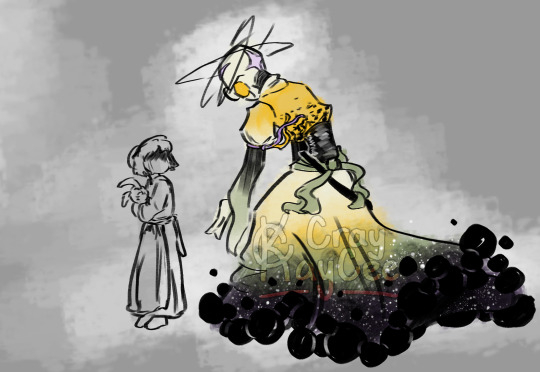
To put it simply, they are a god of guidance and direction, one who guides the lost back home, many of whom are children. They themself do not have eyes, not a necessity when he knows his own way. He even keeps supplies in his bag to assist those who are lost. Would be interesting if someone he has guided keeps returning to where they got lost in search of him. :3c
I used the yellows to base his color scheme with a hint of the purple from the wires of his arms, then added green bc navigating the Earth. Then there's the darker purple to black at the bottom with white speckles to hint towards using the stars as navigation. I colored all this w/ that yellow comfort filter on so I have no idea how it looks xD
They're generally soft-spoken and don't speak much at all. His matter-of-fact manner of speaking helps those who are scared to stay focused and chase away panic. They have large dark orbs at their feet, but I have not yet decided if they have a purpose or not xD
Might add more to his design later, but I kinda like how it is so far ^-^
#map bot#fnaf map bot#fnaf au#celestial sundown au#celestial sundown map bot#cray kay art#you guys have no idea how much joy this lil goofball brings me -w-
921 notes
·
View notes
Text








Johann Bayer – Scientist of the Day
Johann Bayer, a German lawyer and astronomer, died Mar. 7, 1625, at about age 52.
Read More
#Johann Bayer#astronomy#celestial cartography#star maps#histsci#histSTM#17th century#history of science#Ashworth#Scientist of the Day
40 notes
·
View notes
Text

#digital art#oc artwork#bruxaposting#original character#art#outfit design#artists on tumblr#oc#witchcore#star map#celestial
28 notes
·
View notes
Note
hello, hi i came across your post about dottie lasso and i wanted to say FUCKING THANK YOU for articulating how i feel about her. i couldn't msg you directly so i'm sending this lol.
i constantly see people pull the "oh she's trying, she's midwestern, she doesn't know any better" excuse which is completely baseless imo. she's manipulative and henry never gave any indication that he wanted ted to move back. they spent a whole episode showing how at home henry is/could be in richmond, that he has a support system there the same way ted does. it's one of the things i hate the most about how s3 ended (and that list is long). dottie doesn't like ted and she doesn't like him building a life away from what she thinks is the right place for him.
i also think her being so dismissive about therapy and his progress was very telling that she doesn't want him to do better and move on in a way ehe never could. she wants him repressed and sad bc that's what she still is.
Can I touch on the "midwestern" thing as a midwesterner myself? Bc that one is wild.
Because... Ted is midwestern too and he's a fascinating depiction. The show makes it a core of his character to be as wide with his references and interests as possible. When classic christianity is referenced, he always makes a lil remark that is clear code for "I grew up here and I know the language but I'm not one of you anymore." He has all the tics and habits of a man from that background, and he applies all of that candor to a lot of progressive ideals that doesn't come standard.
Like, lets be real, that's the core conceit and appeal of the entire show, that specific combination.
So why the fuck do we just say "oh it's okay, dottie's midwestern" like what the fuck. Like, when Ted was dismissive of therapy, I actually did chalk that up to him being midwestern at first, and then the show went on and established no actually it has nothing to do with that, he has bad history with therapy.
I dunno, I think diminishing someone's actions based on their circumstances is actually anathema to the show, so why would Dottie get a pass?
ANYWAY i'm rambling. probably bc the thing that hooked me on the show was i was gutted by seeing myself in a piece of media so vividly. there's a fucking reason I keep listening to Josh Ritter and looking at pictures of home.
#ted lasso#SIGHS LOUDLY and presses a kiss to a photo of the celestial map stonework of MCI airport#ted lasso meta
30 notes
·
View notes
Photo

Paolo Sebastian 'East of the Sun and West of the Moon'
#paolo sebastian#paolo sebastian east of the sun and west of the moon#coats#embroidery#maps#celestial#sun#moon#paolo sebastial aw19
17 notes
·
View notes
Text
star maps ✦ . ⁺
star maps, or charts, are maps of the night sky with celestial objects plotted on a grid. they have been used for navigation for literally forever by helping to determine one's position on earth relative to the celestial sphere and by keeping time. star maps have been found to exist via many different mediums - cave drawings, bone carvings, painted or drawn on paper, worked into metal, etc. a couple of examples of star maps include the astrolabe, planisphere, and armillary sphere.
for the purpose of this post, i'm referring to working with a star map that you can ideally lay flat on a surface (table, wall, etc.) and manipulate like you would a road map.
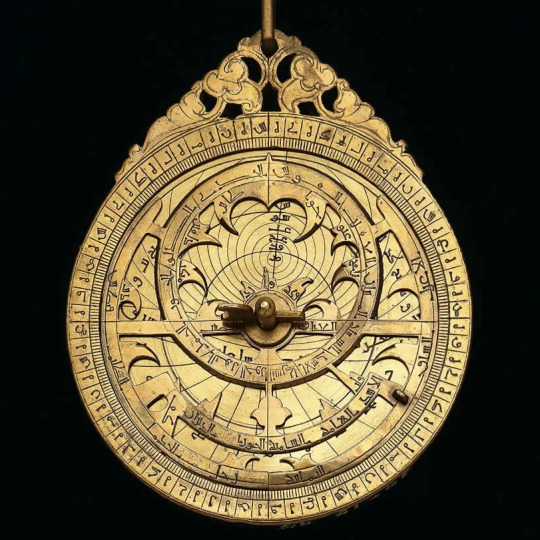


how does one obtain a star map?
you can find all of the items i posted above online, new or old. check out small sellers and secondhand retailers for some cool antique/vintage versions of these things. if you want to print from home, check out eyes on the sky and sky maps for downloadable star maps.


how to use star maps in magic
work surface - use a star map as the literal foundation of your spells. i'm picturing an altar cloth of some sort or even just a star map that you printed out. charging, enchanting, and cleansing - place objects near stars or constellations that match your intent. crystal grids - craft these grids by placing crystals over certain stars or constellations. sympathetic magic - assign a star or constellation to a target and work your magic from afar. bonus points if you use the constellation that matches their sun sign. stellar color magic - consider the spectral class of a star versus its given name when choosing which one to work with. mapping intention - use a star map as a manifestation board by pinning petitions or images to star points or constellations on the map. think of it like a mood board. alternately, connect dots between various points on the map to form a pathway that leads to your desired intent. dowsing - using a pendulum and with the lost object in mind, hover it over your star map and when you feel it begin to react, check the area of the map that caused the reaction - obviously we aren't going to find the lost hair tie that lives under the bed in a cluster of stars, but in this case, look for synchronicities between the stars and your life on this planet or assign mundane locations to points on the map. astromancy and stellar divination - just like dowsing! except this time we're looking for answers, not material objects, and there is more than one way to do this: throw a die and see where it lands; use a pendulum like you would to dowse; close your eyes and pick a point on the map with your finger or wand; automatic writing to form associations between constellations; etc. sigils - connect the dots of stars to form constellations and shapes and use as sigils or symbols of power. bonus points if you do so using colors that match your intent. also, how cool would it be if you did this using a needle and thread to really lock in your intent?
disposing a paper map
you can do so however you want! if it were me, i would flip the paper over and petition my intent in writing one last time, and then respectfully discard it. my personal preferences include burning and burying. if you plan to reuse your map because, for example, it's made of cloth, wash it when you're finished and do a little cleanse before its next use!
© 2025 bunny-claws
#cosmic witchcraft#cosmic witch#celestial witchcraft#witchblr#witchcraft#celestial witch#celestial magic#cosmic magic#constellations#star maps#star charts#stellar magic#bunny-claws
7 notes
·
View notes
Text
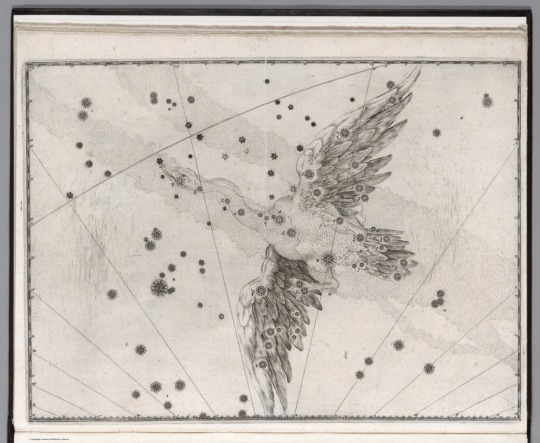
Constellation: Cygnus, the Goose Bayer, Johann (1572-1625)
Publication date 1655
51 unfolded engraved plates of celestial constellations by Alexander Mair. The very rare fourth edition of Bayer's Uranometria (first published in 1603), the first atlas to cover the entire celestial sphere, in fifty-one star charts, including one containing twelve new constellations unknown to Ptolemy. The illustrations are based on Jacob de Gheyn's designs for the Grotius edition of Aratus, published in Leiden in 1600. Johann Bayer (1572-1625) practised as a lawyer in Augsburg, but his principal interest was in the rapidly developing field of astronomy. His most important innovation was a new system of identifying all stars (prior to the invention of the telescope) by Greek and Roman letters, known today as the Bayer designation. The 1655 edition is much rarer than the 1661 edition" (Milestones of Science Books). "Bayer's was the first accurate star atlas. Earlier star catalogues followed Ptolemy's Almagest in using verbal descriptions to describe the location of stars within the 48 northern constellations of classical astronomy, an awkward system that occasioned constant errors and misapprehensions. Bayer, a lawyer and amateur astronomer, was the first to identify the location of stars within a constellation by the use of Greek letters (with the addition of the Latin alphabet for constellations with more than 24 stars). This simple innovation greatly facilitated the identification of stars with the naked eye, just five or six years before the invention of the telescope, and Bayer's stellar nomenclature is still in use today. Bayer used Brahe's recent observations for the northern sky, and included, in chart 49, twelve new southern constellations observed by the Dutch navigator Pieter Dirckzoon Keyzer and reported by Pedro de Medina. To simplify identification of the stars Bayer included in his typographic descriptions both the traditional star numerations within each constellation and the many names for the constellations employed since Ptolemy (Christies). The Uranometria was reprinted in 1639, 1648, 1655 (this copy) and 1661. Constellations largely identified by cataloger.
Deborah Warner, The sky explored: celestial cartography 1500-1800 pp. 18-19
Found in the David Rumsey Map Collection
#astronomy#astro observations#illustration#stars#star map#map#johann bayer#celestial#david rumsey#archive
24 notes
·
View notes
Text
Now, what I want to see from star trek is how aliens represent other aliens in art. Imagine if that ancient Bajoran guy who space-sailed to cardassia came back and told ppl how cardassians look, spawning hundreds of kinda shitty drawings in bestiaries after a long game of telephone where they barely look recognisable (like these: first is a scorpion, second is a panther)

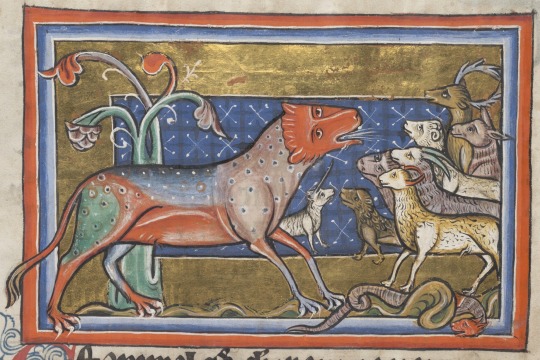
[Image ID: a square medieval illustration of a creature with a human-ish face, a fish-like body, and four limbs sticking out akimbo. it has a sharp tail that is piercing someone's hand. /.End ID]
[Image ID: a deer-shaped creature with a red belly, face, and legs, a blue back, green butt, and beige neck. it has white streaks coming out of its mouth, as if it's exhaling or spitting. a group of rams, sheep and deer look at it, with very confused expressions. /. End ID]
All the pre-warp species that the federation had broken the prime directive with must have some sick paintings of vaguely humanoid creatures standing around in matching outfits.
BUT MORE IMPORTANTLY: do other species have something like the zodiac? Or drawings of the star systems around their planet, using familiar figures to link different stars together? What did they call the foreign planets, before they learned they were called Vulcan or Romulus or Ferenginar? Imagine all the pre-warp star maps in different alien languages and art styles. the ones we have irl say so much about the cultures they were made in.



first pic [Image ID: a photograph of the nebra sky disk, from 1800-1600 BC. It is a turquoise coloured metal disk with a gold circle representing the sun, a crescent moon, and small circles depicting the Pleiadies star cluster. /. End ID]
second pic [Image ID: an annotated diagram of the Mayan Wakah-Chan Tree, a design found on the burial lid of Lord Pacal, from circa 680 AD. It is an illustrated diagram depicting the sun, moon and planets with intricately patterned symbols. /. End ID]
third pic [Image ID: an illustration from The Book of Fixed Stars by Abd al-Rahman al-Sufi, circa 964 ad. it depicts the constellation of Orion, using a black ink drawing of a kneeling figure with the stars drawn as red circles on different parts of the body. Each of the stars are labelled in Arabic. /. End ID]
I could go on forever about how we love to look into the vast unknown to find reflections of ourselves, and how i think star trek is an extension of that urge we've clearly been having since the dawn of time. Its not just the need to study things that will help with our everyday lives (like looking at the harvest moon), its the way we often take a celestial body and make it the symbol of a human characteristic, like how klingons represent honour and vulcans represent logic. what we think about space and what we do to fill in the gaps of the unknown say a lot about how we think in general. and according to trek we think a lot about weird little blokes in weird little outfits so. yh fair enough
i think this is my most research heavy shitpost ever lmao. but please add ur thoughts or take these ideas however u like
#star trek#and if u know more about the pics ive added- do share!#ive always wanted to do a star map from the perspective of Bajor#like how would they represent the badlands and cardassia and the wormhole / celestial temple#im guessing they have both scientific and spiritual representations of space and i wonder how they would cross over#Especially with regards to the occupation and their resultant views on cardassia#pretty sure the orbs were just floating in space too right? that would be A Thing#the stuff andy JORTS robinson wrote about the hebitian god Orelius is really interesting#in ASIT he describes a piece of art where the sun/orelius's rays are piercing through the hearts of the cardassians and into the planet#i wanna see it so baaaad#also im happy to fix any accessability issues on this post bc im not sure if ive done it as well as i could#im not sure how accurate the annotations are on the Mayan pic too- ive added the website i found it on#tng#ds9#cardassians#bajor
30 notes
·
View notes
Text
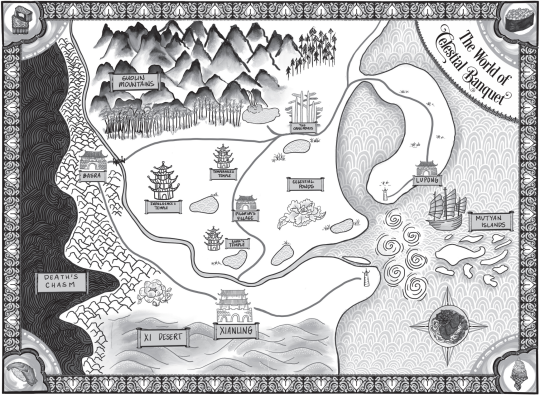
2 notes
·
View notes
Text
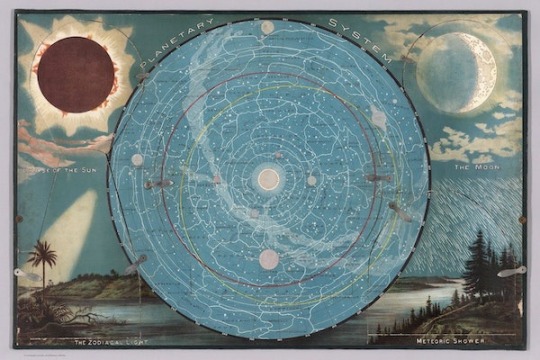
Planetary System chart, with five opening flaps, depicting Eclipse of the Sun, The Moon, The Zodiacal Light, and Meteoric Shower, from Yaggy's Geographical Study, 1887
#history#curiosity#own post#art#mystery of the map#cartography#celestial#moon#earth#space science#astronomy#art history#zodiac#the sun and the star
65 notes
·
View notes
Text
Ghosts of History- Augmentation and the Eugenics Wars in Star Trek
(Also available on my substack!)
From the start augmentation has been connected to eugenics, and therefore has been a criticism of white supremacy. However, it has also from the start been given a brown face; therefore augmentation represents the fear of brown people given justification. On some level, the horror of augmentation is "what if brown people acted like we do? What if our problems spilled out and caused them to be even better at our games of destruction than us?" Augmentation is implied to have started in this US, as were The Eugenics Wars (having started as "the Second Civil War" before the conflict spread to other countries).
The association, while grossly mishandled in Trek's canon, isn't entirely unfounded. Ethnic and religious chauvinist movements have occurred in Africa and Asia for centuries before European colonialism, and supremacist ideologies have as well. Existing ethnic divides (sometimes stemming from non-European colonialism) were often used by colonizers to cause further conflict by exacerbating existing problems, and the aftermath has, as of yet, never been resolved. The wrongs committed have never been righted, and colonial meddling makes talking about the rights and grievances of minorities taboo in some cases.
Racial supremacist ideologies have also been adopted by some non-white people- there's a joke that a significant amount of anonymous white supremacist accounts online are secretly run by brown men, and it unfortunately is based on a real phenomenon.¹ Something I am very familiar with is how non-Black "North Africans" have attempted to gain global prestige by rejecting a connection to Africa- downplaying their connection to the desert, to the rural, and to darker skin. I have seen too many social media posts claiming random white blonds and gingers are "true representatives" of Mediterranean Africa when they don't even fully represent Mediterranean Europe. Existing issues have allowed people to co-opt bigoted ideologies of white origin- and unfortunately, in some countries, this has included eugenics.
Enterprise implies that a significant amount of augments were "designer babies", human embryos modified before birth for desired traits. This phenomenon is one we deal with today, and it is reserved for the wealthy, and commonly defended by and performed in white countries. Deep Space Nine (DS9) furthers this, adding that augmentation as of the 24th century could even be done on children outside the womb, but ultimately for the same purpose. However, Enterprise (ENT) and The Original Series (TOS) imply augmentation is usually "successful", while DS9 implies it isn't.
The augments we see in the former two shows are fully "supermen" convinced of their superiority. They are portrayed as aggressive liars and manipulators, who may use sexuality as a weapon. On a metatextual level, I would note that many autistic people struggle with emotional regulation, as do other neurotypes, disorders, and disabilities. This can lead to anger issues, violent urges, and outbursts. While autistic people are stereotyped as truthful, we are sometimes known to have behavioral issues that are perceived as manipulative (this is especially true of low support needs autistics).² Plenty of other neurotypes may have similar behavioral issues. This is distinct from the “genetic personality” that is assigned to augments, as the presentation of emotional dysregulation varies. But if we deconstruct the metanarrative… then are augments really “perfect supermen”, cured of all disabilities and “abnormalities”? The Machiavellian personality Star Trek uses for augments is, itself, pathologized and linked to various disorders.³ My point here is that if we don't accept that augments are “supermen”, then the implication is that eugenics really doesn't work. Not even in advanced sci-fi. This reading still isn't unproblematic, but it's one to keep in mind.
In Deep Space Nine, however, the main augment we meet is still very readily identifiable as probably being autistic. No active metatextual deconstruction required. Julian sometimes struggles to understand socially appropriate behaviors, or outright ignores them (many autistics will tell you they understand this or that, but don’t respect it or understand why people do it), is morally stubborn, and has special interests. Further, he possibly was intellectually disabled as a child, with augmentation being done to “fix” him. While I read Julian as still autistic, some people take the fact that he’s augmented to mean that he isn't anymore. The other augments we meet in DS9 are also mostly, high support needs disabled people that live in an institution. The only one that isn't is Lauren, who seems to have lower support needs. However, she has a high sex drive, which is notable as women have been sterilized by eugenicists specifically for having high sex drives. Especially if they were deemed “imbeciles”.⁴
Sarina eventually is able to leave the Institute, due to Julian treating her for her medical issues and making her support needs lower. This choice is controversial, but I don't personally think treatment lowering Sarina's support needs is the same as “curing” her, though I don't especially like it because the nuance is certainly not carried through the show. With that lack of nuance around cures vs mitigated support needs, the nuanced feelings around how different support needs are treated intercommunally is also gone. You can examine it on a metatextual level, but odds are you'll only do it if you're “in the know” because it's not in the episode.
As Julian's experiences match up with designer baby trauma, this overlaps with the experiences of trans people and intersex people. One of the most famous designer babies to speak out against their parents is Elon Musk's daughter, Vivian. Her defiance of his desire for his kids to fit a specific, biologically determined role by being transgender is a driving factor in why he's now a public, rabid Nazi. Designer babies struggle with high expectations placed on them, parents treating them like an object they own rather than a person, feeling like science experiments, controlling families, and a lack of support. The "designer baby" scheme also doesn't really work out, as many designer babies are autistic, were born pre-term and disabled, or inherited issues from biological parents anyway. Despite designer babies not existing when Deep Space Nine aired, the show predicted a lot of the social and psychological struggles they experience through Julian's character, as well as predicting the failure of such procedures to achieve desired results.⁵
A thorny area to acknowledge within this is also that people can be negatively impacted by eugenics while adopting it's ideology. Elon Musk is (allegedly) autistic. However, he is also a eugenicist that does Nazi salutes. Unfortunately, he's not a solitary figure. Many autistics with low support needs are chauvinistic and demeaning towards those with medium and high support needs. Some of these people continue to identify as having Aspergers (fittingly, a diagnosis named after a Nazi that separated the “good” autistics from the “needs to die” autistics), and call themselves “aspies”. Aspergers was retired as a diagnosis before I was diagnosed almost a decade ago, and is outdated terminology to say the least.⁴
However, these behaviors aren't neatly cordoned off to just self identified aspies, though they are strongly associated with them. Even autistics who aren't actively eugenicists often have shitty beliefs regarding people with high support needs. Sometimes people also state things like “aspies/autistics are the next stage in human evolution!” and aggressively deny that they are in any way disabled. I have personally been told, “autism is disabling, Aspergers isn't”, with the implication that disability was bad. What I'm getting at here is that the implication in Deep Space Nine that many augments are still disabled or neurodivergent is not as incompatible with augments still believing in eugenics as you'd expect. Further, there are various mystical and pseudoscientific nonsense beliefs spread- we don't have augments in our world, but we do have “starseeds”, “energy workers”, “rainbow/crystal/indigo children”, and so on. These may be accompanied by anti-medicine beliefs.⁴
There is also something to the pattern alphacanon (the shows and films in the Trek universe) implies for the spread of the Eugenics Wars. In terms of real life issues, terrorist organizations in the Global South have often started as being funded, armed and/or trained partially by the US, before eventually turning on them and becoming pariahs (this phenomenon is called “blowback”).⁶ Further, their extremist ideologies were also created by the US or encouraged by the US. Like the Eugenics Wars, there is a sense in which "terrorism" is something that started as an American problem and spread outwards. It is notable that after a much more humanizing portrayal of augments in Deep Space Nine, Enterprise- as a post 9/11 entry to canon, and therefore jingoistic and sensitive to the topic of terrorism- returns to the origin of augments in Trek. Particularly, it makes them inherently villainous due to biological impacts on their personality.
This idea, of a genetically determined personality, is ironically, a eugenicist one. Especially when the personality traits in question are things such as morality (those deemed immoral, criminal, sexually perverse, and so on were sterilized in the US).⁴ It is also an idea that Deep Space Nine loudly rejected. Furthermore, it's a lazy and boring way of creating an antagonist. It is much more likely that many augments were indoctrinated into a specific ideology. Enterprise, however, refutes this, and generally refutes DS9's refutation of "genetic personality". When Arik Soong tries to raise augments to not be like Khan, he fails because that is "in their nature". Ignored is the fact that Soong believes in at least some eugenic ideas, such as augments being the next step in the evolution of humanity. All augments, ENT argues, need to be hunted down and killed. ENT also tied the Eugenics Wars to the Global South, with Archer mentioning his great grandfather fighting in "North Africa" against augments. During the 90s. The Sahelo-Saharan region has, in recent decades, struggled with religious extremist violence. Even though Enterprise's main augment is white, he's still named Malik, which means "king" or "owner" in Arabic. This tie is not new, as on top of Khan being Khan, TOS states that Khan ruled over a large swathe of Asia nearly equal to a quarter of the planet.
Of course, the connections to the War on Terror didn't exist when TOS, TNG, DS9, or VOY were made. During DS9's run, a terrorist could still be a hero- so long as they didn't get too in your face about the fact that they were inspired by Palestine when writing her culture. However, it does end up fitting in hindsight, especially when coupled with the series that was influenced by the War on Terror. Because of the racial implications of augmentation, augments such as Julian face a constant pressure to be one of the good ones. "For every Julian Bashir that can be created, there’s a Khan Singh waiting in the wings". Julian is told to his face that he's an "exception" in a later episode.
The current alphacanon (shows and films) stance on the origin of augmentation directly ties it to the Cold War, and accidentally ties it to Nazism. Currently, it began in the 1950s with scientists (implied to be in America) started trying to create supermen that would "lead Humanity into an era of peace in a world that had only known war". If you know your WW2 history, you will immediately recognize this is an ubermensch. You may also recognize that in the 1950s, a lot of Nazi scientists were running around America thanks to Operation Paperclip. The implication from the information we have indicates this ideology spread outwards.
While I don't know of as many eugenics movements in the Global South, I do know that Westerners have promoted some degree of negative eugenics via fears about overpopulation. This fear has lead to Westerners educating women in Asia and Africa about birth control (good) because they don't want there to be "too many" Asians or Africans (bad). Population control efforts using birth control started in India in the 1950s, and in the decades afterwards, were aggressively pushed by other countries controlling million dollar loans and food aid. These efforts did often target lower income families, and in the 70s people of low socioeconomic status were sometimes picked up off the street or rounded up in their villages by police to be sterilized. Religious tensions with the Muslim minority also came into play, with Muslims being suspicious of the genocidal implications of this tactic. During the 1970s, over 18 million sterilizations were done. To achieve such numbers, operations were often poorly done, unhygienic, and lacked follow up care. Thousands died as a result.⁷
While the fear of overpopulation targeting Africa and Asia is justified by pointing out differences in fertility rates, the actual issues said to be caused by overpopulation (carbon emissions, for example) are overwhelmingly caused by white, Western countries. The issue "overpopulation" is worried about is not actually carbon emissions. It's worried about white people being too outnumbered.⁸ Eugenic ideology has not been fully adopted in the Global South, but it is rising, especially in connection with fascist movements such as Hinduvta. In fact, some Indians associated with the RSS (the overall organization Nahendra Modi is associated with) have publicly promoted the idea of designer babies, though in a less high tech and more accessible form.⁹ Subtler forms of eugenics are also promoted, occasionally in slogans such as "tashin al nasal" (Egyptian Arabic for "improve the race"), a sentiment which is linked to violent racial nationalism in Mediterranean Africa, and partly responsible for why I try to no longer use the terms "North" and "Sub-Saharan" to describe Africa. The Earth that Starfleet presents seems to be one wherein not only did we have far more advanced technology during the 1950s, but also where the eugenic ideals the West exported to the Global South focused very strongly on positive eugenics (trying to encourage certain behaviors rather than trying to limit negative ones, though both are often done simultaneously).⁴
Puzzling is the fact that Khan is an augment, and one of the most notable and powerful. Khan is explicitly mentioned to be a Sikh in his first appearance. Sikhs are an ethnoreligious minority in India (which is a Hindu majority country), but are the majority in the region of Punjab. Post-colonial Indian politics, especially recently, have been dominated by religious, caste, and ethnic chauvinism and supremacy, in favor of high caste Hindus (from the Northern regions).¹⁰ Said people are also the ones, to my understanding, who would be more likely to adopt ideologies such as eugenics. In fact, two decades after Star Trek introduced Khan, Sikh civilians were killed by the Indian government and subjected to genocide.¹¹ As before mentioned, eugenic programs in India are typically associated with Hindu supremacy. The fact that Khan is an augment is puzzling (though not impossible) due to the socioeconomic struggles of that community.
The Eugenics Wars did not present a united front of augments vs non-augments. From canon alone, we know augments fought with each other as well as fighting against non-augmented humans. There is also the possibility that some augments fought as allies with non-augments. Further, while the Federation is against augmentation, it is not against ableism. The idea of "self improvement and self enrichment", first espoused in TNG, has the unspoken conclusion that if you can't achieve, you're worthless. Being mediocre is a failure, and this is part of what drove the Bashir parents to break the laws around augmentation. As Worf states "...parents would feel pressured to have their children enhanced so that they could keep up".
This observation isn't entirely original. In a “Trek, Actually” video by Steven Shives, he points out that Federation society, or at least some Federationers, are implied to be bigoted towards those with disabilities, and that being disabled or having a disabled child may still be a source of shame. In a comment (that I don't fully agree with) by lunatickoala on this video, they also point out "...If you have a society where people are told pretty much from birth that a person's job, their goal in life is to better themselves, you can damn well sure that people are going to be judged on how much they've "bettered themselves". And in the absence of capital capital, social capital becomes the only capital. People with power and influence will use that power and influence to ensure that their kids get into the best schools... In such a society, having a learning disability would be like having a physical disability in Klingon society..."¹²
Further, we see that disabilities such as dyslexia, dyscalculia, and dyspraxia (seen in Spock in Discovery) are still stigmatized as of the 23rd century. Spock, in turn, during TOS undermines Pike's autonomy as a disabled person and his wishes not to go to Talos. Pike's disability is also portrayed primarily as an object of horror and discomfort. People who are paralyzed and disfigured still have lives they enjoy. Mental illness is also portrayed with varying quality. PTSD is often handled well, but many other characters with other issues aren't. Garak, one of my favorites, is in a weird in-between area for me. His claustrophobia is treated well, possibly because it's caused by trauma and therefore is similar to PTSD, and this is also true for his addiction. However, Garak’s writing often makes him come off as generally… with some screws loose. I don't dislike this portrayal, but it's complicated because Garak is a murderer, slowly deprogramming fascist, and generally what one might term “bad representation”. Frankly my main issue is that he's the only character on Deep Space Nine portrayed as his flavor of mentally ill. Many characters on Deep Space Nine have mental issues, but they are ones that Star Trek already handles well or portrays in specific terms that are more palatable.
While some disabilities, such as blind people, are not particularly stigmatized, this is in part because assistive technology has advanced to the point where blind people can "see". In TNG Geordi defends himself to a person from a eugenicist colony based on his ability to "contribute". While an important episode, it does not actually fully refute ableism because of the attention given to "contribution". Disabled people deserve to live even if they can't contribute anything, because disabled people are human beings who can be happy and enjoy the lives they do lead.
Notably, while Julian's initial fascination with Melora is pointed out as inspiration porn in another Trek, Actually video,¹³ it goes beyond an abled person being weird to a disabled person because I do think Julian is still autistic. His fascination with Melora's refusal to accept help or "special treatment" reads as being influenced by his own upbringing, where, after being augmented, he was likely taught that asking for help was shameful or inappropriate. When he calls her extraordinary, it's still demeaning and he is still being ableist, but it has the added layer that he has almost certainly internalized that that's what he's supposed to do. Similarly, Julian tries to help Melora with her disability for her work as an expression of his belief that he can “fix” people… which is what his parents did to him (also not an original observation from me). This video also has pretty good criticisms of how this episode focuses more on Julian's thoughts and feelings than Melora's.
While I hope this article leads to a better and more developed understanding of this issue and it’s real life ramifications, the tension we noted at the beginning remains. Augments and the Eugenics Wars are a statement against white supremacy and ableism, though one that falls short. They also serve as a vehicle for fears regarding Brown people, especially in TOS and ENT. As a concept, it is not internally consistent due to these two forces.
Sources and Further Reading:
“Many Indian trolls wrote me hate mails defending white supremacists” by Chandrima Banerjee
All About Autistic Meltdowns: A Guide For Allies from Reframing Autism, and Manipulation – Does It Occur in Autism? from Autism Awareness Center
Machiavellianism from Wikipedia. Note that this is considered a “dark triad” trait, a term that immediately invokes a sense of foreboding. While not a disorder itself, it is discussed in similar terms to the way people colloquially discuss disorders.
“Aspie Supremacy”- A Deep Dive by Ember Green.
Designer Babies Are Teenagers Now—and Some of Them Need Therapy Because of It by Emi Nietfeld
Go to United States and state-sponsored terrorism on Wikipedia and feel your brain melt! This isn’t even all the examples I would give; for example, this page does not cover Operation Cyclone. Whose Monster? A Study in the Rise to Power of al Qaeda and the Taliban by Nicholas Kotarski does discuss this, as well as other factors in the forming of al Qaeda.
India: “The Emergency” and the Politics of Mass Sterilization by Prajakta R. Gupte
The Overpopulation Myth and its Dangerous Connotations By Brittney Bush Bollay
India's far-right is trying to make India great again through eugenics by Jyoti Malhotra
The Growing North-South Divide in India by Sehr Rushmeen
It’s Time India Accept Responsibility for Its 1984 Sikh Genocide by Simran Jeet Singh
Trek, Actually, “What the Bashir Family Tells Us About Ableism in Star Trek” by Steven Shives
Trek, Actually, “How Star Trek Actually Deals (And Doesn’t Deal) With Disability” by Steven Shives
Specific Trek Episodes: Star Trek: The Original Series, "Space Seed”. Star Trek: Deep Space Nine, “Dr. Bashir, I Presume?”. Star Trek: Deep Space Nine, “Statistical Probabilities”. Star Trek: Deep Space Nine, “Chrysalis”. Star Trek: Enterprise, “Hatchery”. Star Trek: Enterprise, “Borderland”. Star Trek: Enterprise, “Cold Station 12”. Star Trek: Enterprise, “The Augments”. Star Trek: Strange New Worlds, “Strange New Worlds”. The lore about the 50s is from Star Trek: Into Darkness.
28 notes
·
View notes
Text
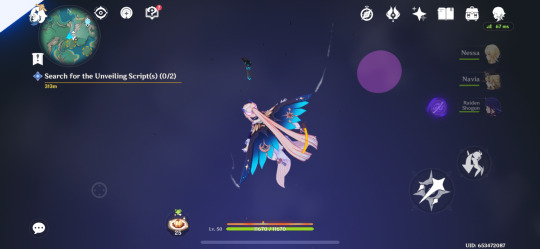

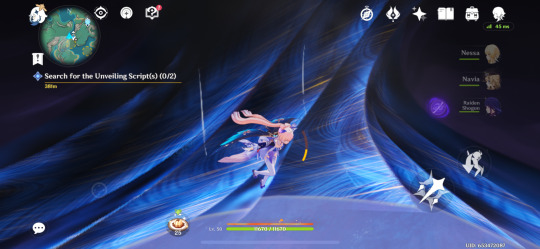



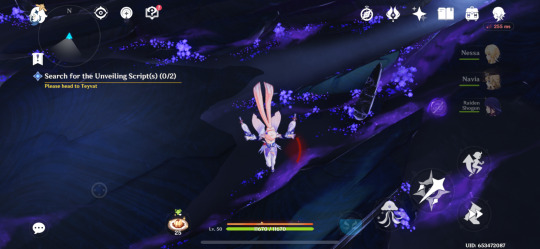

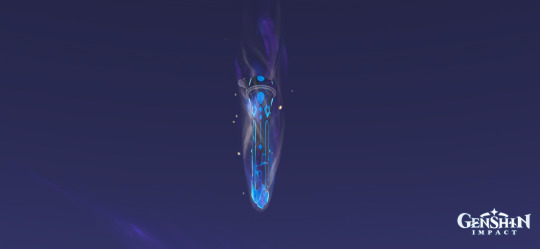
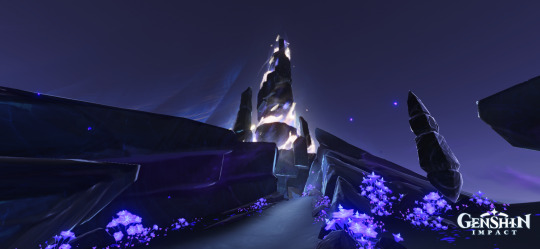
Ok so I was riding the water/lava saurian in a cave, trying to go up a lava fall, but I don’t think it was one I was supposed to be able to swim up, and I must have hit a corner because I dashed and suddenly I clipped through the wall and started falling under the map. It was here I decided to get as many pics as I could to document my findings, so here they are. Kokomi had to be sacrificed upon landing but I revived her no problem, and I realized where I was; I’d been seeing this big obsidian spire in the background when I teleported in like you’re supposed to, and now I was actually standing at its base because I happened to fall in directly above it. This was also a good spot to view the Celestial Nail hidden under the map, so I got pics of that too.
#genshin impact#Natlan#night kingdom#genshin impact spoilers#Natlan spoilers#boundary breaking#noclipping#under the map#accidental discoveries#celestial nail
7 notes
·
View notes